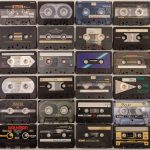Crafting the Perfect Cover Letter for Sound Engineers: Tips and Examples
In the competitive world of sound engineering, a well-crafted cover letter can be the key to unlocking the door to your dream job. It’s not merely a formality; it’s your chance to showcase your personality, skills, and passion for the craft. Let’s delve into the nuances of creating a cover letter that resonates with employers and sets you apart from the crowd.
Understanding the Role
When applying for a position, it’s vital to comprehend the specifics of the role. Sound engineers work across a myriad of environments, from studios to live venues. Therefore, your cover letter should reflect your understanding of the industry. Consider the following points:
- Technical Skills: Mention the software and equipment you’re proficient in, whether it’s Pro Tools, Logic Pro, or bespoke hardware.
- Experience: Highlight relevant projects that showcase your expertise. Have you worked on a notable album or a high-profile live event? Such experiences lend credibility.
- Collaboration: Sound engineering is rarely a solo venture. Discuss your ability to work harmoniously with artists, producers, and other technicians.
Personalising Your Approach
A generic cover letter is easily dismissed. Tailoring your letter to the specific company can significantly enhance your chances. Here’s how to personalise effectively:
- Research the Company: Understand their ethos, recent projects, and the types of artists they work with. This knowledge will allow you to align your skills with their needs.
- Use Specific Examples: Rather than stating you’re a good communicator, illustrate this by recounting a time when your communication skills resolved a technical issue on-site.
- Enthusiasm Matters: Employers want to see your passion for sound engineering. Share what excites you about their work or the industry at large.
Structuring Your Letter
A coherent structure ensures your letter flows well and captures attention. Here’s a suggested outline:
-
Introduction: A brief introduction stating the position you’re applying for and how you found it. A hook can be particularly effective here—perhaps a quote from a famous sound engineer or an anecdote from your career.
-
Body Paragraphs: Divide this section into two or three paragraphs, each focusing on a different aspect of your qualifications:
- Technical Expertise: Discuss your skills and experiences in detail.
- Project Highlights: Share significant projects that demonstrate your capabilities.
- Team Dynamics: Reflect on your collaborative experiences and how they have shaped your approach to sound engineering.
-
Closing: Reiterate your enthusiasm for the role and the company. Include a call to action, inviting them to read your CV or discuss your application further.
Final Touches
With your letter drafted, don’t forget the finishing touches. Proofreading is essential; typos or grammatical errors can undermine your professionalism. Consider the following:
- Format: Keep it clean and professional. Use a readable font and maintain consistent spacing.
- Length: Aim for no more than one page. Conciseness is key; every word should serve a purpose.
- Contact Information: Ensure your contact details are clear and accessible.
Crafting a compelling cover letter is an art in itself, particularly in the intricate field of sound engineering. By understanding the role, personalising your approach, structuring your content well, and paying attention to detail, you can create a document that captures your essence as a sound engineer.
In the ever-evolving landscape of job applications, CVPortal continues to provide a wealth of quality CV references, ensuring you’re always equipped with the best tools to make your mark.


